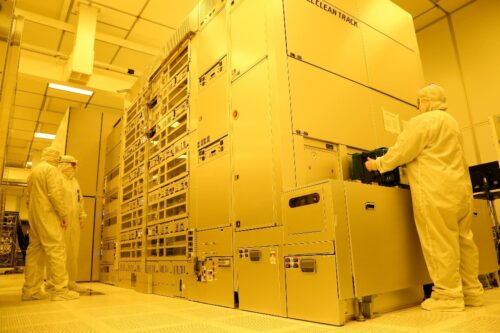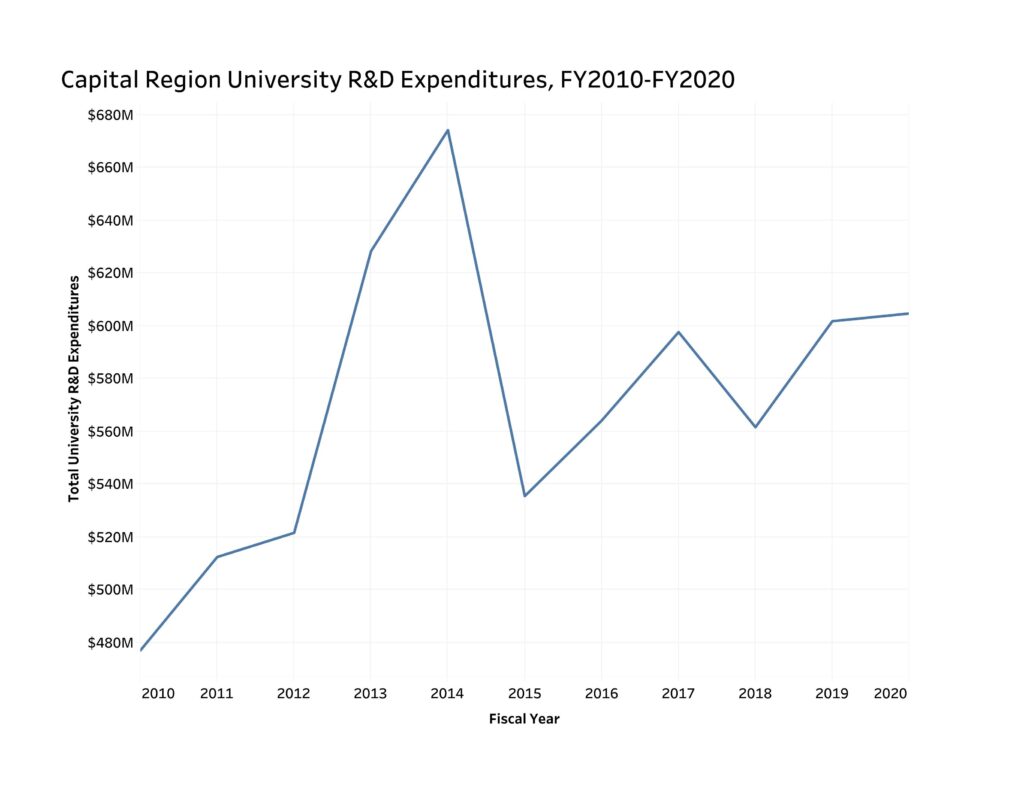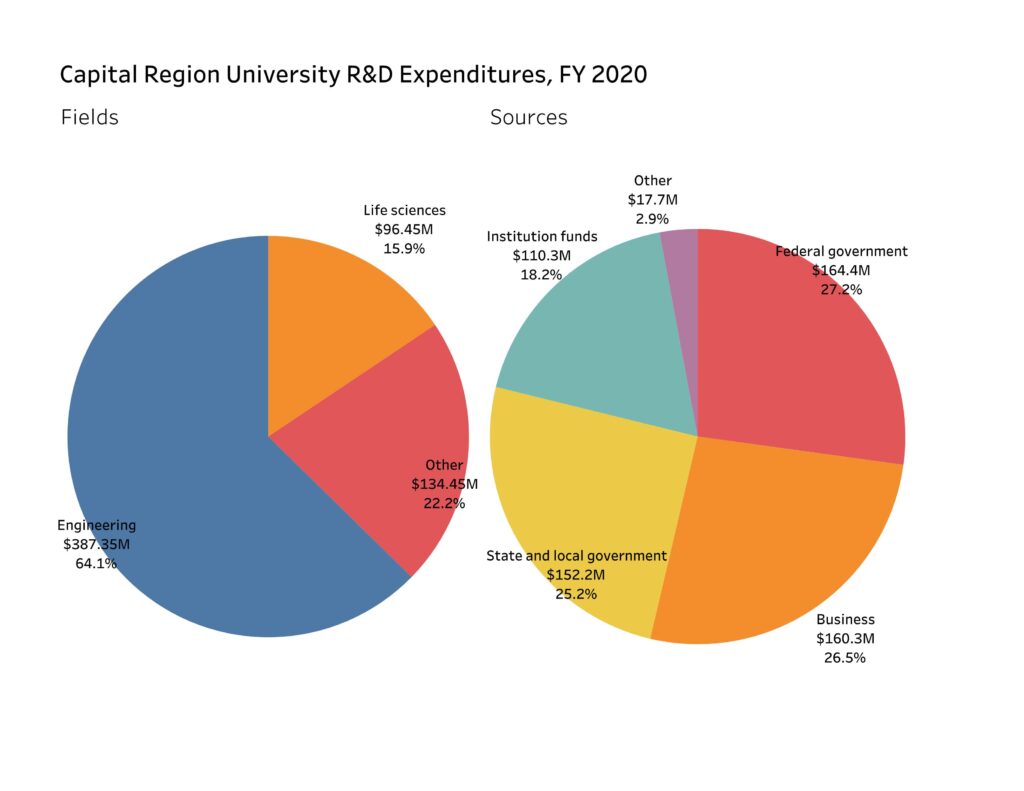Capital Region University R&D Spending Rose During the Pandemic in FY2020
Business Funding at Local Colleges and Universities Eclipses State Funding

Boosted by increased business funding, Capital Region university research and development spending continued to climb during the pandemic in fiscal 2020, reaching a seven-year high, according to a Center for Economic Growth (CEG) analysis of data from the National Center for Science and Engineering Statistics (NCSES). The region’s 22.8 percent annual increase in business-funded university R&D especially bodes well for SUNY as it vies for the Albany NanoTech Complex to be designated a National Semiconductor Technology Center (NSTC).
SUNY Polytechnic Institute Acting President Dr. Tod A. Laursen said, “We were thrilled that Deputy Secretary of Commerce Don Graves, Senator Charles Schumer, and Governor Kathy Hochul were recently able to see first-hand how SUNY and our many public and private partners play a key role in New York State and the nation’s innovation ecosystem. At the Albany NanoTech Complex, public-private research, development, and commercialization collaborations, along with critical workforce development initiatives between our institution, semiconductor industry leaders, New York State, and partners nationwide, make the Capital Region the ideal location for the National Semiconductor Technology Center.”
Institutions
In fiscal 2020, eight colleges and universities in the eight-county region spent $604.7 million on R&D., a 0.9 percent increase from the previous year and the most expenditures since fiscal 2014. The regional institutions that reported R&D expenditures to NCSES included SUNY Poly, the University at Albany, Albany College of Pharmacy and Health Sciences, Albany Medical College, Rensselaer Polytechnic Institute, Skidmore College, Clarkson University Capital Region Campus, and Union College.

Funding Sources
Driving that growth was a 22.8 percent increase in business-funded R&D to $160.3 million, which eclipsed state and local government funding at $152.2 million. Since fiscal 2018, business funding for university R&D has increased by 67.7 percent, with SUNY Polytechnic Institute accounting for the lion’s share of that type of spending. Major business funders at SUNY Poly and the Albany Nanotech Complex include IBM, Applied Materials and Tokyo Electron. The fiscal 2020 increase in business funding follows the 2019 openings at SUNY Poly of Applied Materials’ Materials Engineering Technology Accelerator (META Center) and IBM’s IBM Research AI Hardware Center.
The federal government remains the leading source of the region’s university R&D funds (27.2 percent), but business is close to surpassing that by accounting for 26.5 percent of R&D funding. State and local governments accounted for 25.2 percent of funding, followed by institutional finds at 18.2 percent.

Fields
More than two-thirds (64.1 percent) of the region’s university R&D expenditures were in the field of engineering and much of that likely related to semiconductors. Engineering R&D was up 12.8 percent over the year to $387.3 million. The region’s second largest university R&D field was life sciences, which accounted for 15.9 percent of expenditures. However, the life sciences field saw a 29.7 percent decline in expenditures to $96.4 million.
Smaller R&D fields that experienced annual increases in expenditures included computer and IT sciences (16.3 percent to $21.1 million, geosciences, atmospheric sciences, and ocean sciences (2.3 percent to $19.1 million), mathematics and statistics (23.7 percent to $4.6 million) and psychology (10.7 percent to $8.9 million).
CEG Initiatives
CEG and its Business Growth Solutions (BGS) unit leverage the Capital Region’s R&D assets to do the following:
Promote the region around the world at industry conferences;
Improve businesses’ access to labs at facilities, such as those at SUNY Polytechnic Institute, Rensselaer Polytechnic Institute and others affiliated with Innovate 518, a University at Albany-led collaborative effort of Capital Region incubators, accelerators, and entrepreneurial service providers.
Accelerate commercialization by leveraging tech scouting, gathering technology-driven market intelligence, engaging Empire State Development’s Division of Science, Technology and Innovation (NYSTAR) for testing and development;
Develop prototypes with its Stratasys F270 3D printer at the Tech Valley Center of Gravity or provide hand-on access to it;
Assist in the preparation of grant applications for the National Institutes of Health (NIH), Small Business Innovation Research (SBIR) program and Small Business Technology Transfer Program; and
Identify potential investors and providing venture pitch coaching through the VentureB series.
Don’t miss these insights into the trends that are shaping the Capital Region’s economy. Sign up for CEG’s e-news and follow us on:













